Pop Culture
Tilda Swinton Plays the Ultimate Art-World Outsider in A24’s New Film ‘Problemista’
Comedian Julio Torres, who wrote, directed, and stars in the film, opens up about his low-key art-world satire.
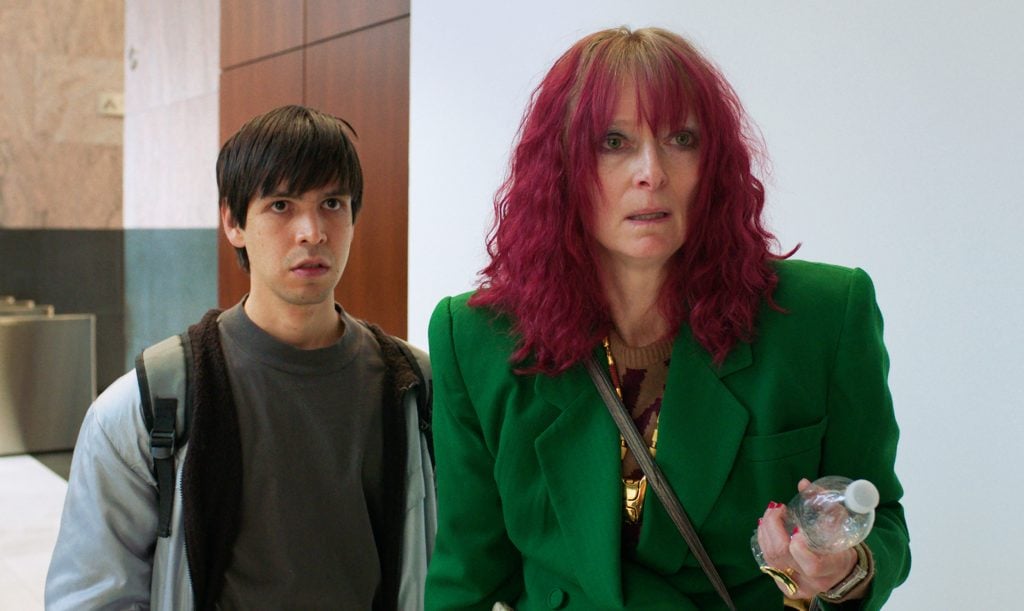
A24’s new surrealist comedy Problemista follows the misadventures of a young immigrant, Alejandro, who forgoes a bucolic life in El Salvador for the mean streets of New York City. There, he aspires to join Hasbro as a toy designer, brimming as he is with ideas for offbeat playthings. It’s while hopping from job to job in his quest to secure a work visa and his American dream that Alejandro lands himself in a world far more baffling and bizarre: the New York art scene.
Or, at least, the fringes of it. The film was written and directed by and stars Julio Torres, the comedian who’s had stints at The Tonight Show and Saturday Night Live (where he created the wonderfully weird “Papyrus” skit), and helped mastermind Los Espookys. His first feature film, he told me over Zoom, emerged from his own experiences navigating the U.S. immigration system as much as his time working jobs that “touched the peripheries” of the art world.
“I was an assistant to various people in the art world, working in museums and galleries. It was just being able to observe that world without ever really being a part of it,” he said. “It ended up being very, very informative to this movie.”
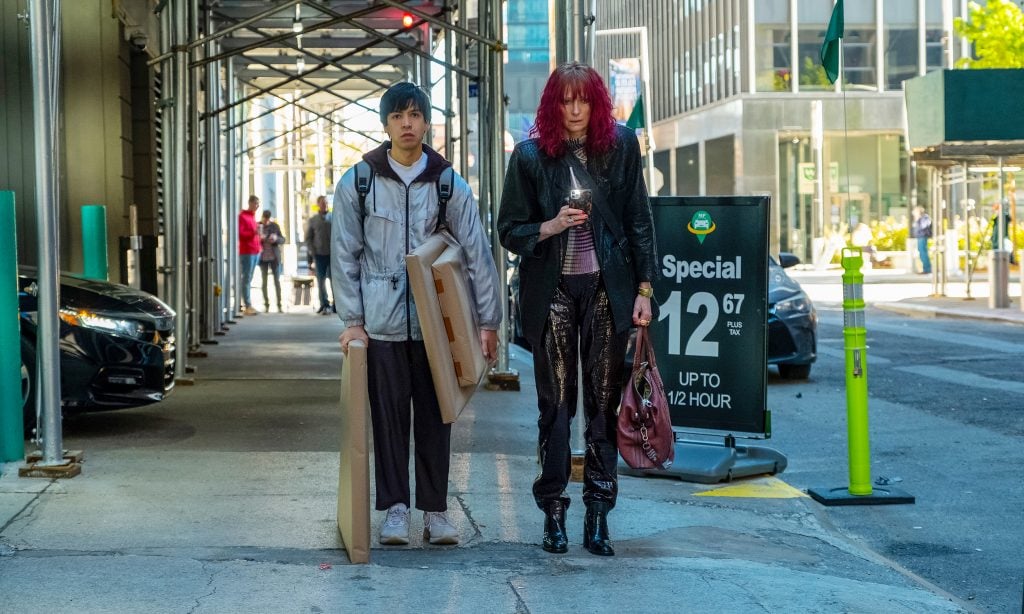
Julio Torres and Tilda Swinton in Problemista (2024). Photo: Jon Pack, courtesy of A24.
Those observations come to the fore in the character of Elizabeth, an intensely eccentric art critic who promises to sponsor Alejandro’s visa if he serves as her assistant. It’s a harder task than it sounds. Elizabeth is trying to stage an exhibition of artworks by her late husband Bobby (played by RZA), hoping to land the show at “Pace, Gagosian, maybe the Whitney.” She sends Alejandro out to track down the canvases—paintings, mind you, that aren’t entirely Pace, Gagosian, or Whitney material.
The unparalleled Tilda Swinton plays Elizabeth with a chaotic, harried energy—her red hair is uncombed, her mascara smears, her iPhone flashlight is inexplicably switched on all the time—as the critic grows increasingly desperate in her attempts to secure Bobby’s legacy. One character describes her as “a monster”; Torres prefers “a wild animal.” But Swinton injects her portrayal with compassion, allowing sympathy for a woman who’s simultaneously grieving and frantic for recognition from the art world.
“Something that I kept observing in the art world was the people whose jobs were in the commerce of beauty were always just so upset. Like, why? What are you so upset about?” Torres explained. “It’s because there’s something so gate-kept about those jobs. There’s a certain echelon that people on one side of the fence are upset and people on the other side are upset that they can’t be on the other side of the fence.”
“Seeing Elizabeth,” he added, “is not about who she is, but who she is trying to be.”
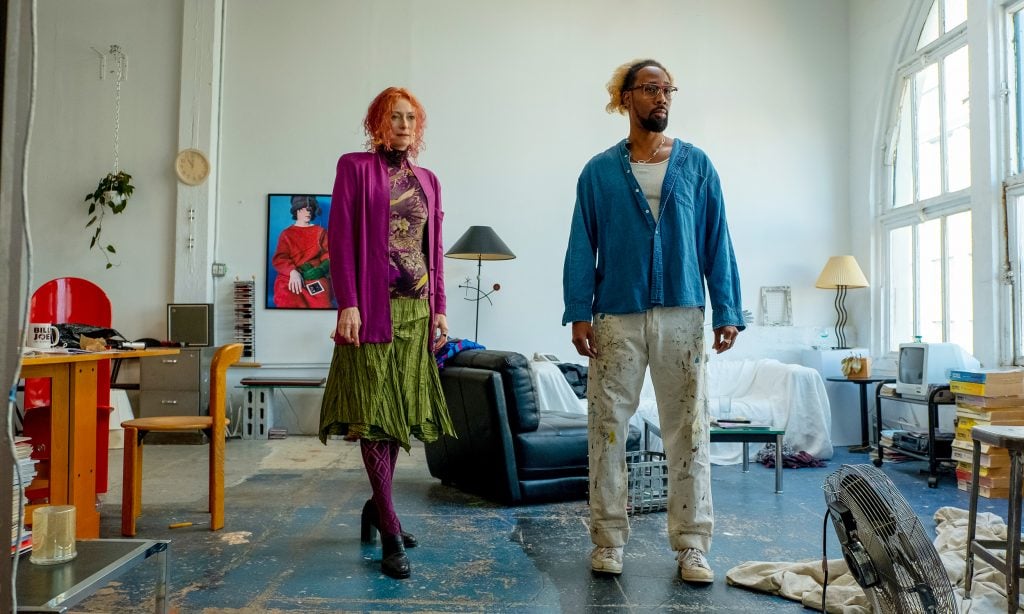
Tilda Swinton and RZA in Problemista (2024). Photo: Jon Pack, courtesy of A24.
In production notes accompanying the film, Swinton similarly characterized Elizabeth as “innately unhappy,” adding: “She’s tilting at windmills. She’s set herself this ridiculous task. She breaks my heart.”
Elizabeth has indeed an uphill challenge selling Bobby’s posthumous show. Her husband, after all, was a painter singularly obsessed with one subject: eggs. He only painted realistic portraits of eggs—one against a blue sky, another set on a gingham tablecloth, and yet another teetering into an abyss—so many that his exhibition is to be titled “13 Eggs.” It’s not exactly the kind of work that New York galleries are clamoring for, which further gets to the point of Bobby, said Torres.
“With Bobby, you can tell he’s an outsider and that the art world is rejecting him, but he won’t bend,” he said. “In one of my conversations with RZA, we said, imagine at one point someone told Bobby that he could make a lot of money by painting one work that wasn’t about eggs, and he said no. That’s the kind of guy he is. Being an artist is about having a voice, ambition, and the dignity to pick the hardest path.”
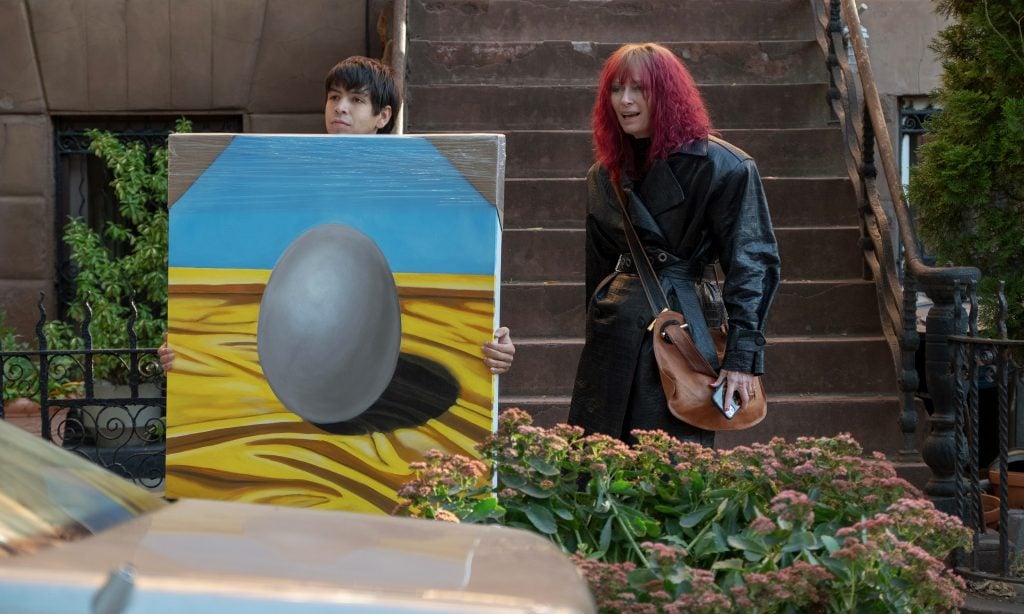
Julio Torres and Tilda Swinton in Problemista (2024). Photo: Jon Pack, courtesy of A24.
The egg still lifes were commissioned by production designer Katie Byron to Torres’s specifications for satin-y oil paintings. But his own tastes in art, he admitted, tend more toward the Expressionist—”anything that sees life from a different angle.” He admires works by Egon Schiele and Kandinsky, and has found himself especially attracted to German Expressionism. “There’s a gloominess and an existential dread there that feels very ‘immigration,'” he joked.
Even the painters he has roped into the movie—Justin Liam O’Brien, who created Problemista‘s credit sequence, and Jonny Negron, who is designing a poster for the film—have leaned into surreal yet tender compositions.
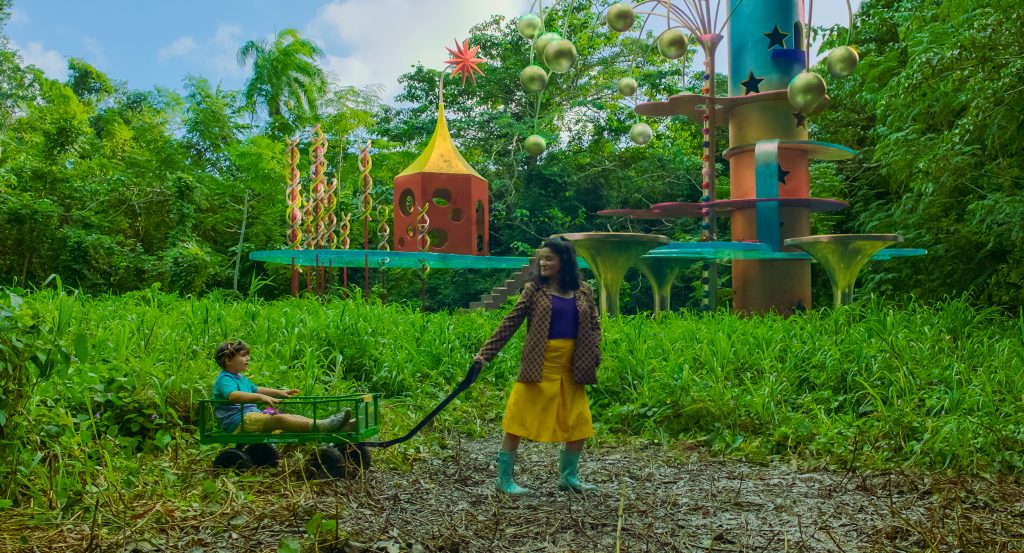
Catalina Saavedra in Problemista (2024). Photo courtesy of A24.
And there’s one more artist in the film: Alejandro’s mother, Dolores (Catalina Saavedra, of Rotting in the Sun fame), who dreams up highly architectural sculptures. One of them, a colorful, geometric playhouse, comes to life for her young son in the opening of the movie. This, as in the New York chapter, hews close to Torres’s life. He was raised in El Salvador by a civil engineer father and an architect mother, who shares his love for Kandinsky and used to build elaborate cardboard dollhouses with him.
“This is sort of an exaggerated version of what we used to do,” he said of the movie’s opening playground, which was designed by his own mother. “Like, what if she had the power to make these insane big things?”
Imbuing Dolores with an artistic temperament, said Torres, lent context to Alejandro’s journey. Like the art-world figures he encounters along the way, she, too, “has a vision and something to say.” And maybe, to make room for her son to fulfill his own dreams, her own artistic pursuits have been hamstrung, said Torres, “in the way that so many characters in the movie are.”
“I’m very interested in humanizing people with difficult lives by showing that they also get to be stubborn in their art,” he added, “that being stubborn is not something that is exclusively for people with a wealth of options.”





